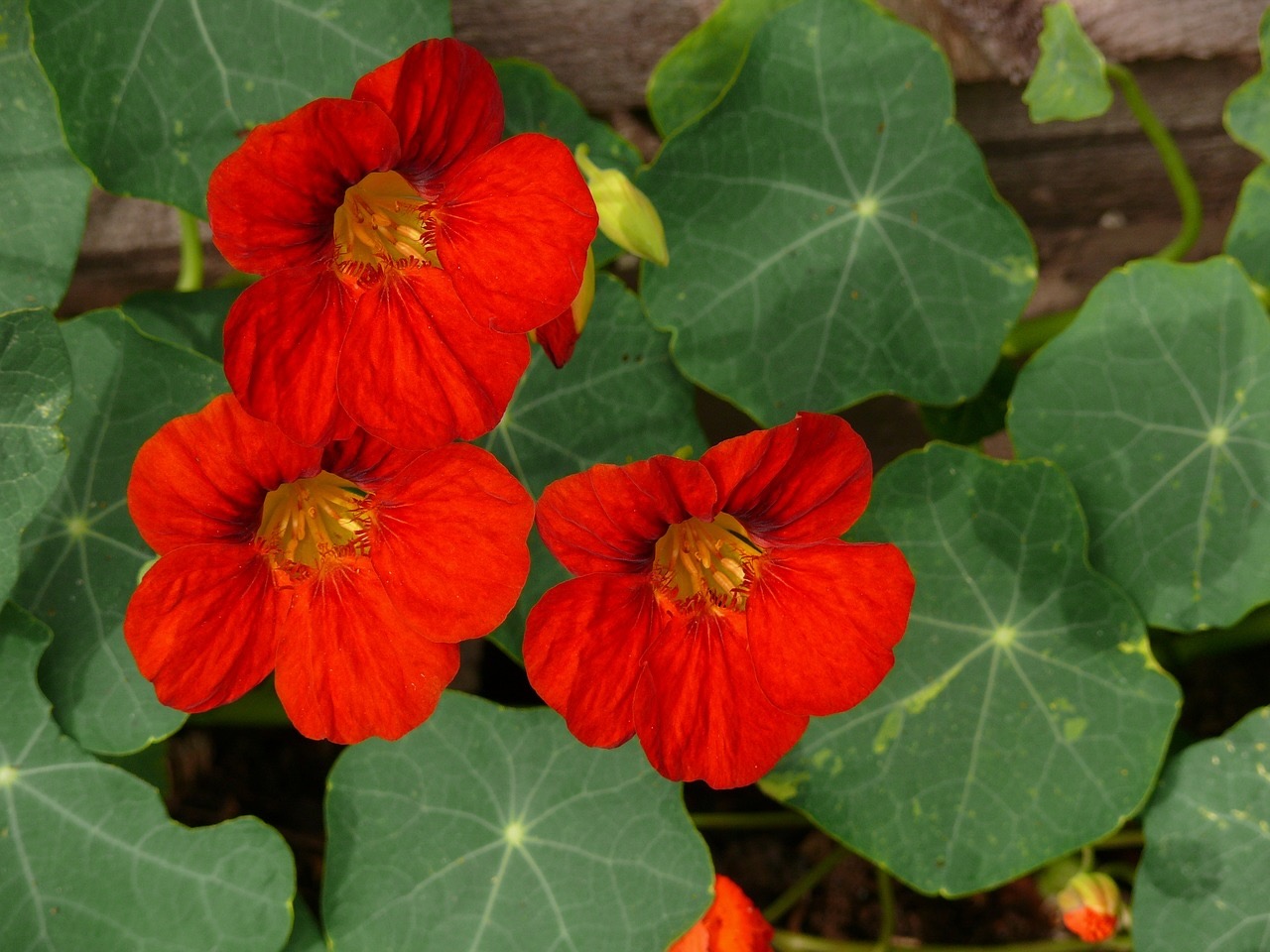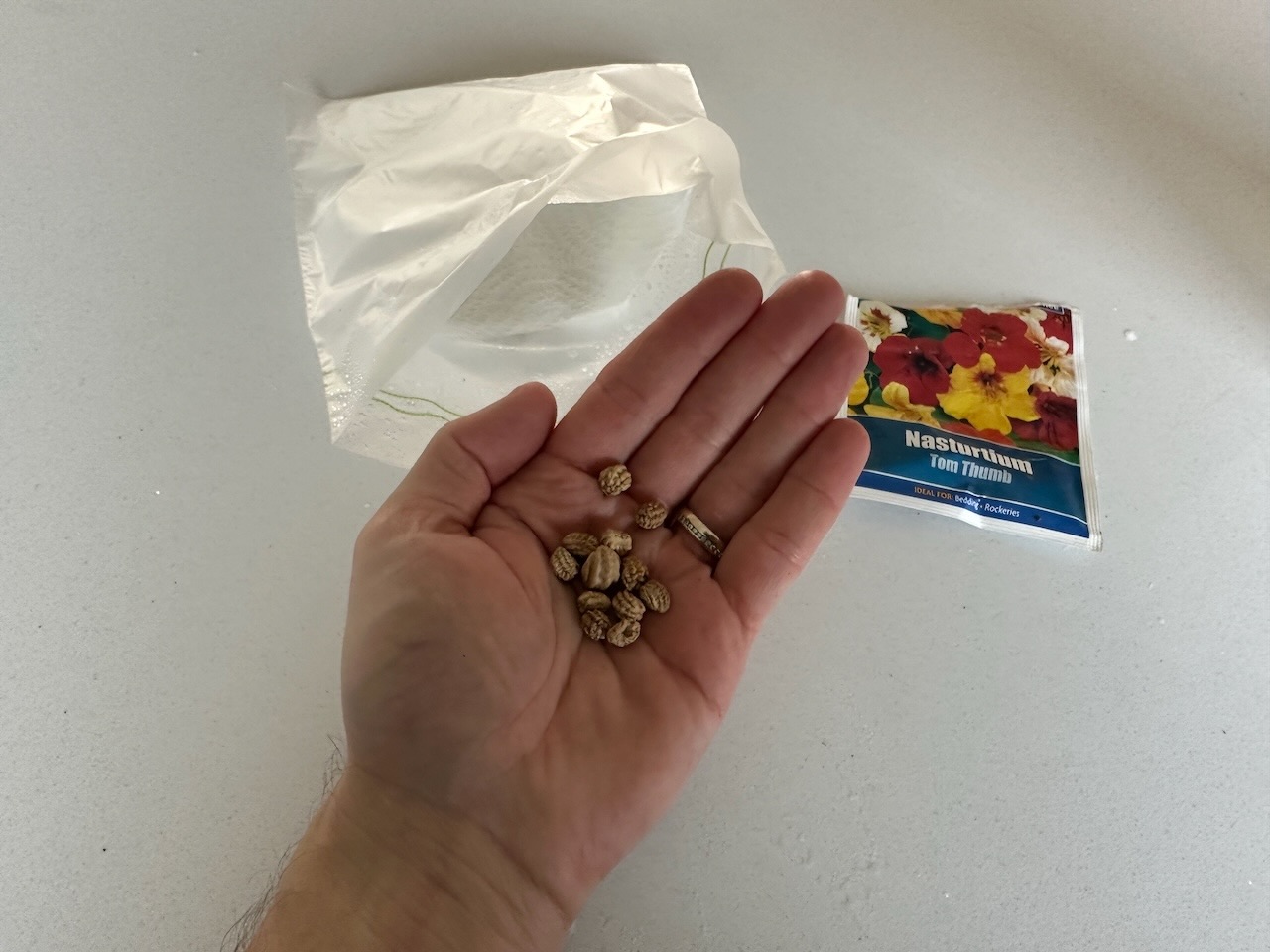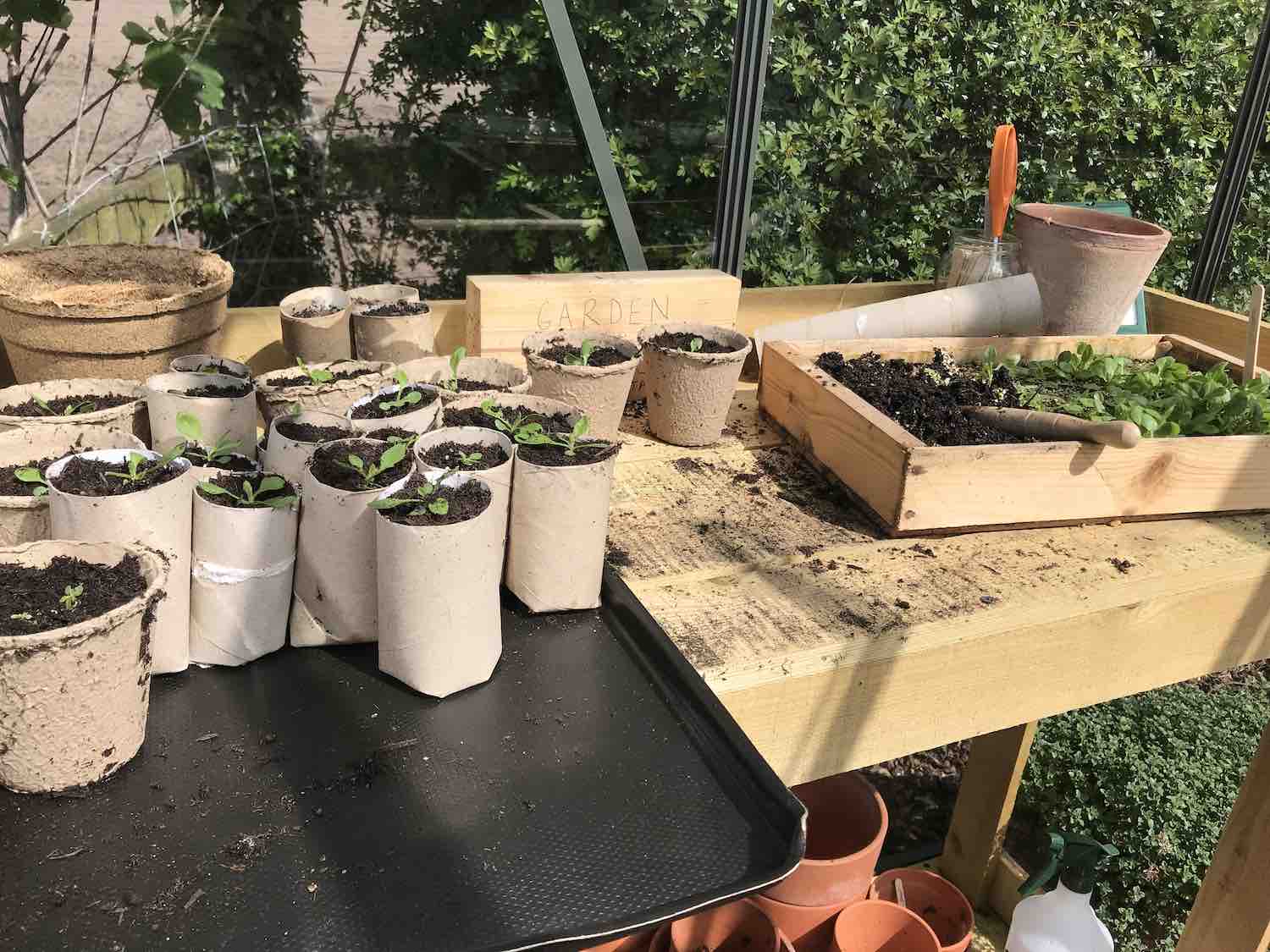Hi @paul-andrews
Thanks for your question. The quick answer is you're better off buying trays of bedding plants if you need them to flower so quickly. There is only one type of bedding plant you're going to get any chance of flowering in around 6 weeks which is nasturtium.
The beauty of nasturtiums is they're edible, too! Great for a beginner gardener.

How to grow nasturtiums from seed
Let's take a deeper look at how to grow these super beginner-friendly seeds as a beginner gardener. You'll be pleased to know that nasturtium seeds are super cheap to buy as well, with most packets being around £1. They do look strange, like little brains, when you unpack the seed packets.

1. Choose a Planting Location
Consider the sunlight requirements of nasturtiums. While they prefer full sun, they can tolerate some shade, especially in hotter climates. Ensure the planting location has well-drained soil to prevent waterlogging, which can lead to root rot.
2. Choose potting compost or multipurpose compost
Nasturtiums thrive in soil that is loose, well-draining, and slightly acidic to neutral (pH 6.0-7.0). If your soil is heavy clay or compacted, consider incorporating organic matter such as compost or aged manure to improve its texture and fertility.

3. Sow the Seeds
Nasturtium seeds are large and easy to handle, making them ideal for direct sowing into the garden or into individual pots on a window ledge indoors. Plant the seeds about 1 inch deep and space them 8-12 inches apart. You can sow them in rows or scatter them across the planting area for a more natural look.
https://youtu.be/DICGT44SMSs
4. Water the Seeds
Keep the soil consistently moist during the germination period, which typically takes 7-14 days. Water the soil gently to avoid dislodging the seeds. Once the seedlings emerge, water them regularly, especially during dry periods, but avoid overwatering, as excessive moisture can lead to fungal issues.
5. Provide Support (Optional)
If you're growing climbing or trailing varieties of nasturtiums, such as 'Climbing' or 'Trailing', consider providing support for them to climb or sprawl upon. This could be a trellis, garden netting, or even nearby shrubs or fences.
6. Care for Seedlings
Thin out opr prick out the seedlings if they are overcrowded to ensure adequate spacing, which promotes better airflow and reduces the risk of disease. Nasturtiums are relatively drought-tolerant once established but appreciate regular watering during dry spells.
https://youtu.be/seGiNYRhaZE
Keep an eye out for common pests such as aphids, caterpillars, and flea beetles, which may feed on nasturtium foliage. Additionally, watch for signs of fungal diseases like powdery mildew, especially during humid weather. Treat any pest or disease issues promptly with organic or chemical control methods.
Nasturtium flowers and leaves are not only ornamental but also edible, adding a peppery kick to salads, sandwiches, and other dishes. Harvest the flowers and young leaves regularly to encourage continuous blooming and prevent the plants from becoming leggy.
If you want to save seeds for future planting, allow some of the flowers to mature and develop seedpods. Once the seedpods have dried and turned brown, carefully collect the seeds and store them in a cool, dry place until you're ready to plant them again next season.
By following these detailed steps, you can successfully grow nasturtiums from seed and enjoy their vibrant blooms and tasty foliage throughout the growing season.
I hope that helps!
Lee Garden Ninja
Hi @paul-andrews
Thanks for your question. The quick answer is you're better off buying trays of bedding plants if you need them to flower so quickly. There is only one type of bedding plant you're going to get any chance of flowering in around 6 weeks which is nasturtium.
The beauty of nasturtiums is they're edible, too! Great for a beginner gardener.

How to grow nasturtiums from seed
Let's take a deeper look at how to grow these super beginner-friendly seeds as a beginner gardener. You'll be pleased to know that nasturtium seeds are super cheap to buy as well, with most packets being around £1. They do look strange, like little brains, when you unpack the seed packets.

1. Choose a Planting Location
Consider the sunlight requirements of nasturtiums. While they prefer full sun, they can tolerate some shade, especially in hotter climates. Ensure the planting location has well-drained soil to prevent waterlogging, which can lead to root rot.
2. Choose potting compost or multipurpose compost
Nasturtiums thrive in soil that is loose, well-draining, and slightly acidic to neutral (pH 6.0-7.0). If your soil is heavy clay or compacted, consider incorporating organic matter such as compost or aged manure to improve its texture and fertility.

3. Sow the Seeds
Nasturtium seeds are large and easy to handle, making them ideal for direct sowing into the garden or into individual pots on a window ledge indoors. Plant the seeds about 1 inch deep and space them 8-12 inches apart. You can sow them in rows or scatter them across the planting area for a more natural look.
4. Water the Seeds
Keep the soil consistently moist during the germination period, which typically takes 7-14 days. Water the soil gently to avoid dislodging the seeds. Once the seedlings emerge, water them regularly, especially during dry periods, but avoid overwatering, as excessive moisture can lead to fungal issues.
5. Provide Support (Optional)
If you're growing climbing or trailing varieties of nasturtiums, such as 'Climbing' or 'Trailing', consider providing support for them to climb or sprawl upon. This could be a trellis, garden netting, or even nearby shrubs or fences.
6. Care for Seedlings
Thin out opr prick out the seedlings if they are overcrowded to ensure adequate spacing, which promotes better airflow and reduces the risk of disease. Nasturtiums are relatively drought-tolerant once established but appreciate regular watering during dry spells.
Keep an eye out for common pests such as aphids, caterpillars, and flea beetles, which may feed on nasturtium foliage. Additionally, watch for signs of fungal diseases like powdery mildew, especially during humid weather. Treat any pest or disease issues promptly with organic or chemical control methods.
Nasturtium flowers and leaves are not only ornamental but also edible, adding a peppery kick to salads, sandwiches, and other dishes. Harvest the flowers and young leaves regularly to encourage continuous blooming and prevent the plants from becoming leggy.
If you want to save seeds for future planting, allow some of the flowers to mature and develop seedpods. Once the seedpods have dried and turned brown, carefully collect the seeds and store them in a cool, dry place until you're ready to plant them again next season.
By following these detailed steps, you can successfully grow nasturtiums from seed and enjoy their vibrant blooms and tasty foliage throughout the growing season.
I hope that helps!
Lee Garden Ninja
 Lee Burkhill: Award Winning Designer & BBC 1's Garden Rescue Presenters Official Blog
Lee Burkhill: Award Winning Designer & BBC 1's Garden Rescue Presenters Official Blog



